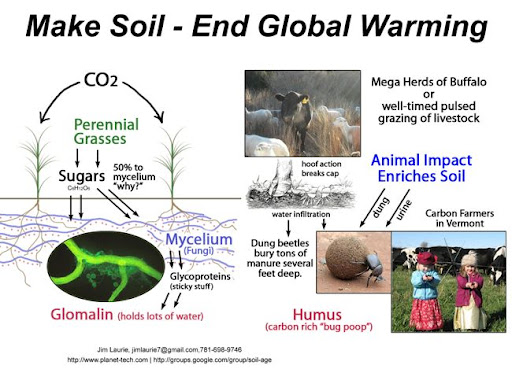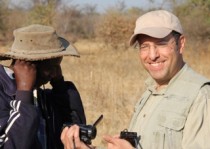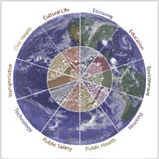You are here
Seth Itzkan, Futurist - Boston Globe Article

Seth Itzkan on the cover of The Boston Globe, Metro Weekly Section from 2003 in an article titled "The local forecast".
The local forecast
Is Boston’s outlook rosy? Signs point to ‘yes,’ say those in the future biz
By Chris Berdik, Globe Correspondent, 12/28/2003
Boston has a great deal to look forward to in 2004. Just ask the futurists.
Seth Itzkan, 43, heads the board of directors of the Boston Chapter of the World Future Society. Seated in a black easy chair in a Davis Square coffee shop, beneath a hubcap clock, he offered this forecast: “One of the things [futurists] look at is the evolution of cities and why one city becomes successful and another one doesn’t. I think the events that have been happening for the last few years and will continue to happen in 2004 are indicative of Boston reaffirming its status as a world-class city.”
Across from Itzkan, on a small couch, sat Michele Bowman, 35, another professional futurist and codirector of Boston’s future society chapter. They had both agreed to share what they thought the new year had in store for their city, but first they wanted to make one thing perfectly clear: “Futurists don’t make predictions.”
Bowman explained the stereotype she and other futurists face, the public belief that “You know, you guys have your crystal balls, and you’re just making a bunch of these predictions, and whatever happened to Rosie the Robot, and where’s that flying car that we were expecting 20 years ago?”
She runs a consulting company called Global Foresight Associates, which studies changes in technology, demographics, social values, and attitudes in order to provide “insights to the future that help our clients determine the strategic implications of change for their business.” Itzkan is the founder of Planet Tech, a company that creates online curriculums for middle and high school students and works with community planning agencies.
For more than 30 years, professional futurists have helped corporations, nonprofits, and government agencies to analyze innovations and world events in the context of long-term trends or as indicators of broader social changes, many of which may take decades to develop. And this is how the futurists at the coffee shop approached the discussion of Boston in the year ahead: the coming winter, the Patriots’ chances in the playoffs, the Central Artery’s demolition, the Democratic National Convention. Rather than stand-alone “predictions,” their comments were tethered to the past and strung out many years into the future.
Itzkan mentioned such milestones as the promised springtime completion of the Silver Line bus route connecting South Station with the rapidly developing South Boston Waterfront, the scheduled opening of the 500,000-square-foot convention center along that waterfront in June, and the final disappearance of the elevated Central Artery, all indicators, he said, that Boston in 2004 will remain committed to being “on the cutting edge of arts, commerce, education, and civic life.”
OK, but will the Red Sox win the World Series next fall? After all, when it comes to baseball in Boston, the long-term trend seems to be high hopes followed by broken hearts. According to Itzkan, that’s only the “mythological trend.” For more realistic baseball trends, he turned to his research. He had peered into the next Red Sox season with a method futurists call “environmental scanning,” in which media is scoured for indicators of upcoming change.
So, rather than assessing the capabilities of new manager Terry Francona or the right arm of Curt Schilling, he brought up the new Red Sox academy in the Dominican Republic. Itzkan believes that soon, possibly in 2004, the academy will produce the next Pedro Martinez or David Ortiz, a high-impact player brought into the organization from an increasingly international talent pool, a chance to “out Yankee the Yankees” who last year had 10 players from Latin America on their roster.
Bowman, however, countered that if the Sox win the World Series in 2004, after so many years of disappointment, it would be a “wildcard event,” meaning “one of those unanticipated, aberrant events that is high-impact but largely unforeseeable.” Other recent wildcard events, according to Bowman, included the drawn-out conclusion of the 2000 presidential election and last spring’s SARS outbreak.
According to Itzkan, while many political analysts now believe that Howard Dean will leave the 2004 Democratic National Convention in Boston as his party’s candidate for president, his nomination could have been deemed a wildcard back when the campaigning began in earnest last summer. Furthermore, Itzkan predicts — er, forecasts — a “real showdown” between Dean and John Kerry in Boston this summer.
“If you think about it, this is Kerry’s backyard, Itzkan said. “He was sort of the shoe-in, you know, Boston, Kennedy, Kerry, the Democratic National Convention being held in the FleetCenter. Kerry can literally walk there from his house. And now, all of a sudden, Dean, the upstart from our neighbor, is here wanting to kind of upstage Kerry in his own hometown.”
Bowman pointed out that Dean’s mix of technology and populism hinted that “smart mobs” of Dean supporters (large groups coordinated via a network of mobile, wireless Internet, and pager technologies) could pop up all over the streets of Boston this July.
Despite such talk of summer, outside the coffee shop, a day of freezing, December rain was easing into early darkness, and the conversation turned to what Boston could expect this winter. The latest Old Farmer’s Almanac advises: “After widespread snowfall in late November and early December, expect below-normal snow through January. February will be a snowy month, and early March will be marked by heavy wet snow.” So, should Bostonians brace for more than the nearly 6 feet of snow that was dumped on the city last winter?
“Ugh,” was Bowman’s first response. Then she elaborated, “What [Boston] will most likely see is an increase in extreme weather conditions.”
Itzkan added that there is a continuing long-term trend of warmer and wetter weather across the country, a pattern that leads to more storms. Statistics from the National Climatic Data Center, a division of the National Oceanic and Atmospheric Administration, suggest that the initial winters of the new millennium have continued the warming trend of the 1990s and that in 2003 most of the eastern United States was “much above” the average precipitation established for the region between 1961 and 1990. According to Bowman and Itzkan, Boston’s upcoming winter will probably be consistent with that long-term climate trend.
Staying on the environmental theme, Itzkan mentioned an upcoming innovation he had uncovered during his scanning research into Boston 2004. Beginning early next year, NStar, the state’s largest utility company, will offer its customers a premium service called Green Power, in which 25 percent of electricity would come from renewable sources, such as solar and wind. “That’s what we would call a possible leading indicator,” explained Itzkan. “Because in 2003 it wasn’t an option, and in 2004 it will be an option. And it will never go back. . . . And I think things like that are part of the city modernizing and part of Boston reasserting itself as a world-class city.”
And yet, Itzkan doesn’t spot innovation everywhere in the coming year. He believes, for example, that in 2004, an unaffordable housing market will continue pushing Boston’s young “knowledge workers,” those between the ages of 20 and 34 who are seen as critical to maintaining the city’s competitive edge in a high-tech economy, out of the area to more affordable destinations such as Austin, Texas.
In the 1990s, according to the Boston Foundation’s Indicators Project 2002, Boston lost 8 percent of its 20- to 24-year-olds and 6 percent of those 25 to 34, largely due to the high cost of living. In addition, 2003 marked the second year in a row that Massachusetts was ranked the least affordable rental market in the nation by the National Low Income Housing Coalition, with a full-time hourly wage of $22.40 required to afford a market-rate two-bedroom apartment.
“I don’t see anything that is going to happen significantly in 2004 to change the housing crunch,” said Itzkan, but he added that these kinds of intense societal pressures often push “really creative” solutions. Bowman also pointed out that while housing is scarce, office space in Boston is relatively affordable and plentiful, which might help support an entrepreneurial boom in the coming year.
Another optimistic forecast offered by Bowman was that the open space parcels that begin to emerge from the Big Dig next year would join a growing list of public spaces across the country that are designated “Wi-Fi zones,” areas where a wireless Internet signal can be freely accessed by anyone with a computer equipped to receive it.
As for the newly submerged highway, Itzkan said he’d like to see Boston follow Virginia’s lead in 2004 and institute an HOV/HEV lane, so that both high-occupancy vehicles and hybrid electric vehicles could take advantage of a designated lane during rush hour.
According to Itzkan, such visions go beyond forecasting, entering the world of “preferred futures,” where futurists edge into advocacy and where many of the more “wishful” futurist visions surface.
The more extreme of these visions contribute to the stereotype that futurists engage in wild speculation. Bowman added that public understanding of futurists is colored by fringe practitioners who advocate things like cryonics (freezing the dead in the hope of resuscitation using future medical advances). Nevertheless, she seemed willing to tolerate more venturesome futurists. “Part of thinking about the future is developing that framework for actually being able to imagine,” said Bowman, who will travel to Las Vegas in January to attend a conference on “The Future of Reality.”
“Because, yes, our work is grounded in trends. Yes, it’s grounded in data. But the reality is that if you want those things to happen, you have to give yourself the ability to imagine them.”



